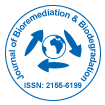Unsere Gruppe organisiert über 3000 globale Konferenzreihen Jährliche Veranstaltungen in den USA, Europa und anderen Ländern. Asien mit Unterstützung von 1000 weiteren wissenschaftlichen Gesellschaften und veröffentlicht über 700 Open Access Zeitschriften, die über 50.000 bedeutende Persönlichkeiten und renommierte Wissenschaftler als Redaktionsmitglieder enthalten.
Open-Access-Zeitschriften gewinnen mehr Leser und Zitierungen
700 Zeitschriften und 15.000.000 Leser Jede Zeitschrift erhält mehr als 25.000 Leser
Indiziert in
- CAS-Quellenindex (CASSI)
- Index Copernicus
- Google Scholar
- Sherpa Romeo
- Öffnen Sie das J-Tor
- Genamics JournalSeek
- Akademische Schlüssel
- JournalTOCs
- Forschungsbibel
- Nationale Wissensinfrastruktur Chinas (CNKI)
- Ulrichs Zeitschriftenverzeichnis
- Zugang zu globaler Online-Forschung in der Landwirtschaft (AGORA)
- RefSeek
- Hamdard-Universität
- EBSCO AZ
- OCLC – WorldCat
- SWB Online-Katalog
- Publons
- Genfer Stiftung für medizinische Ausbildung und Forschung
- MIAR
- ICMJE
Nützliche Links
Open-Access-Zeitschriften
Teile diese Seite
Abstrakt
Hexachlorocyclohexane Contamination and Solutions: Brief History and Beyond. Emerging Model to Study Evolution of Catabolic Genes and Pathways
Nayyar N and Lal R
Recent revelation of the evolution of Hexachlorocyclohexane (HCH) degrading sphingomonads and their acquisition of lin genes for the degradation of HCH isomers at the HCH dumpsites and HCH contaminated sites has lead us to consider that bacteria employ science and chemistry beyond scientific imagination. The HCH contamination of the environment portrays one of the best examples to highlight the evolution of catabolic genes and pathways leading to survival of these bacteria at HCH concentrations as high as 450 mg/g soil. While contamination of the environment with HCH has created several health related issues, this compound has not only enabled us to study the marvel of HCH degradation that sphingomonads employ but has also emerged as a good model to study the evolution of catabolic genes, especially the lin genes. The potential of HCH degradation by these sphingomonads can be tapped in order to create a phenomenal and large scale bioremediation technology. This review describes briefly the massive contamination of our environment by HCH isomers, along with the spontaneous evolution of the versatile HCH degradation pathways in sphingomonads and lin genes in response to HCH.
Zeitschriften nach Themen
- Allgemeine Wissenschaft
- Biochemie
- Chemie
- Genetik und Molekularbiologie
- Geologie und Geowissenschaften
- Immunologie und Mikrobiologie
- Klinische Wissenschaften
- Krankenpflege und Gesundheitsfürsorge
- Landwirtschaft und Aquakultur
- Lebensmittel & Ernährung
- Maschinenbau
- Materialwissenschaften
- Medizinische Wissenschaften
- Pharmazeutische Wissenschaften
- Physik
- Sozial- und Politikwissenschaften
- Umweltwissenschaften
- Veterinärwissenschaften
Klinische und medizinische Fachzeitschriften
- Anästhesiologie
- Augenheilkunde
- Betrieb
- Dermatologie
- Diabetes und Endokrinologie
- Gastroenterologie
- Genetik
- Gesundheitspflege
- Immunologie
- Infektionskrankheiten
- Kardiologie
- Klinische Forschung
- Medizin
- Mikrobiologie
- Molekularbiologie
- Neurologie
- Onkologie
- Pädiatrie
- Pathologie
- Pflege
- Toxikologie
- Zahnheilkunde

 English
English  Spanish
Spanish  Chinese
Chinese  Russian
Russian  French
French  Japanese
Japanese  Portuguese
Portuguese  Hindi
Hindi